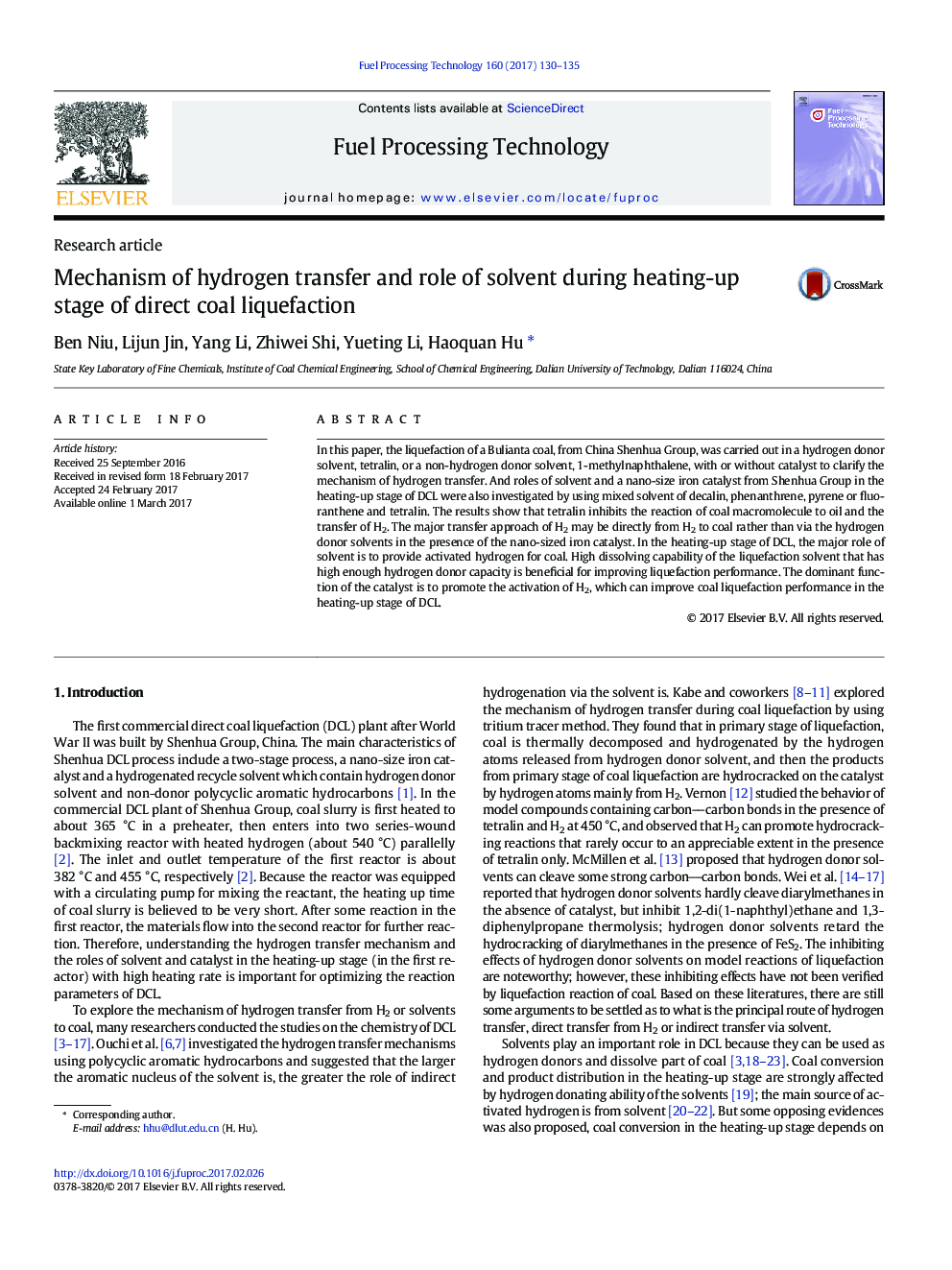| کد مقاله | کد نشریه | سال انتشار | مقاله انگلیسی | نسخه تمام متن |
|---|---|---|---|---|
| 6476436 | 1425386 | 2017 | 6 صفحه PDF | دانلود رایگان |
- Tetralin inhibits the transfer of H2 in coal liquefaction reaction.
- The transfer path of H2 is directly from H2 to coal in the presence of catalyst.
- The major role of solvent is to provide activated hydrogen for coal.
- The catalyst can improve liquefaction performance in the heating-up stage of DCL.
In this paper, the liquefaction of a Bulianta coal, from China Shenhua Group, was carried out in a hydrogen donor solvent, tetralin, or a non-hydrogen donor solvent, 1-methylnaphthalene, with or without catalyst to clarify the mechanism of hydrogen transfer. And roles of solvent and a nano-size iron catalyst from Shenhua Group in the heating-up stage of DCL were also investigated by using mixed solvent of decalin, phenanthrene, pyrene or fluoranthene and tetralin. The results show that tetralin inhibits the reaction of coal macromolecule to oil and the transfer of H2. The major transfer approach of H2 may be directly from H2 to coal rather than via the hydrogen donor solvents in the presence of the nano-sized iron catalyst. In the heating-up stage of DCL, the major role of solvent is to provide activated hydrogen for coal. High dissolving capability of the liquefaction solvent that has high enough hydrogen donor capacity is beneficial for improving liquefaction performance. The dominant function of the catalyst is to promote the activation of H2, which can improve coal liquefaction performance in the heating-up stage of DCL.
Journal: Fuel Processing Technology - Volume 160, 1 June 2017, Pages 130-135
